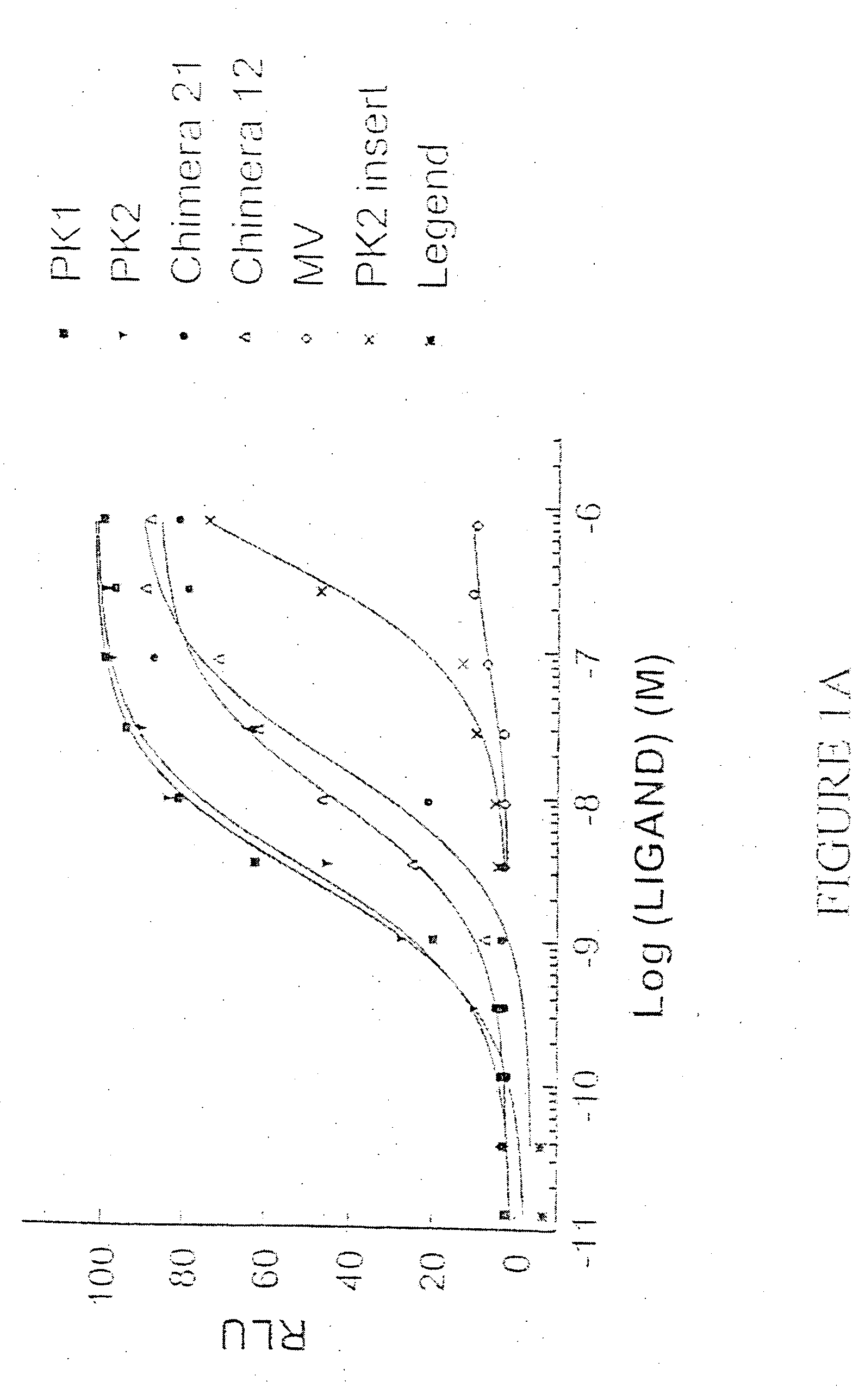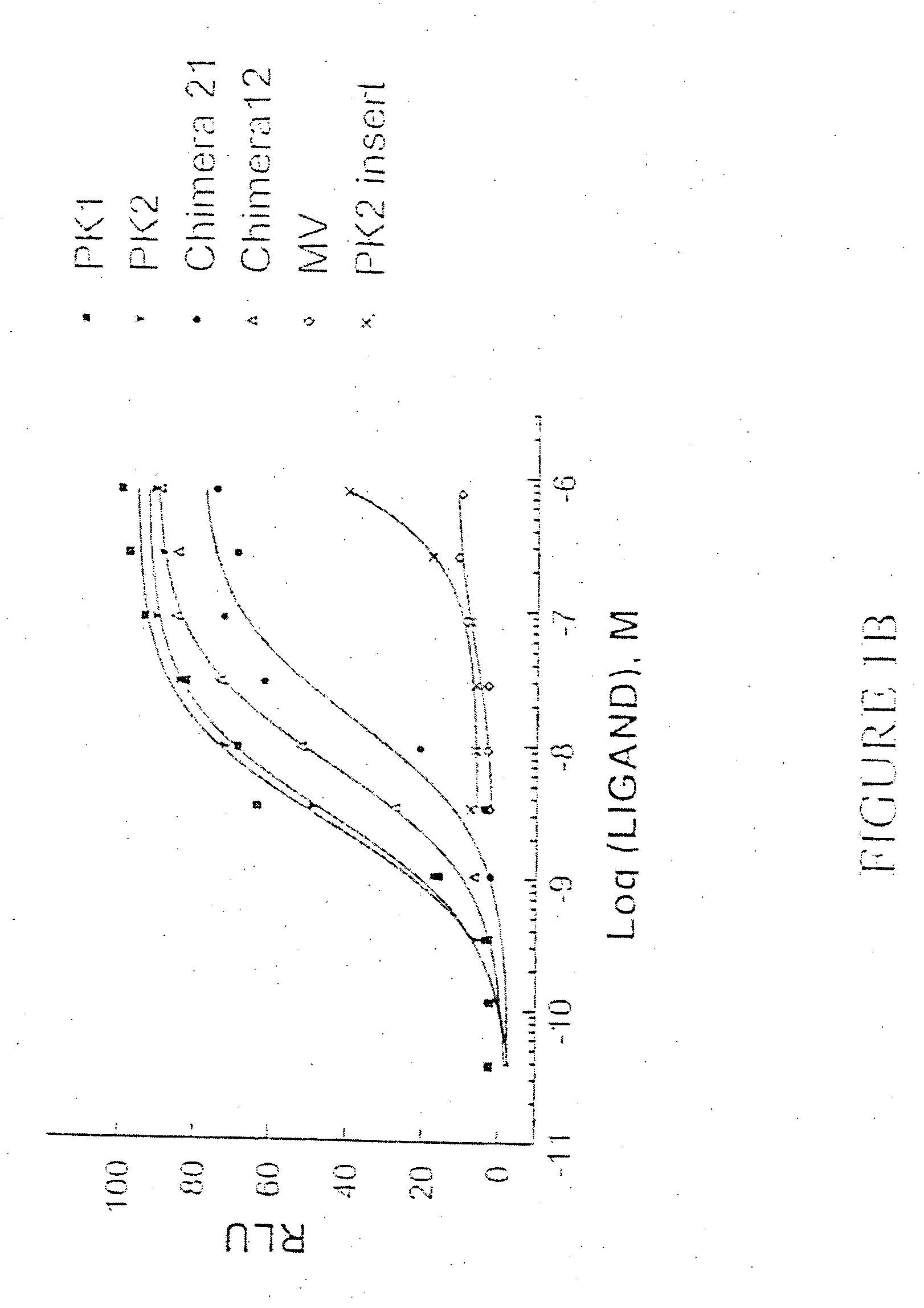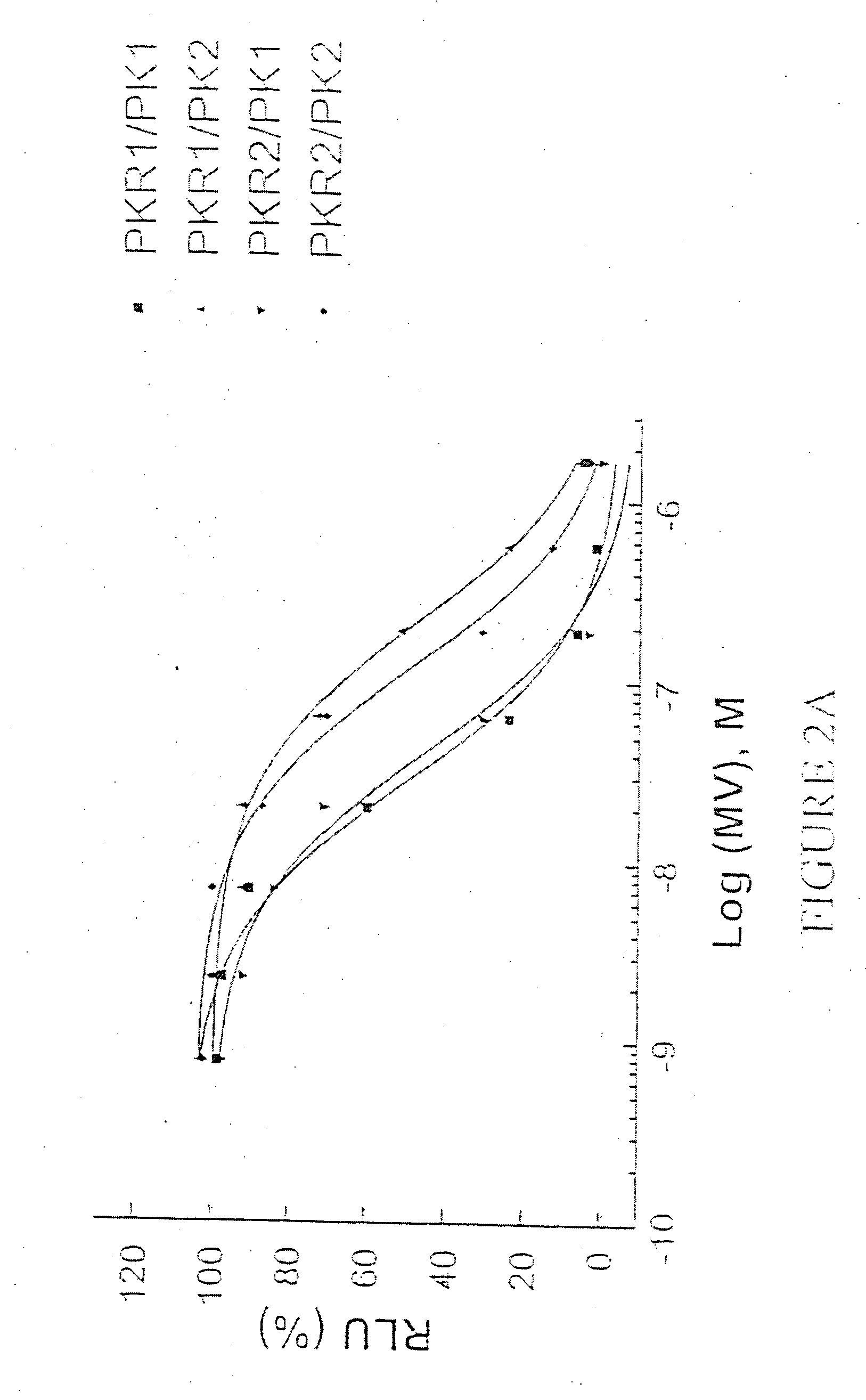Methods for modulating gastric secretion using prokineticin receptor antagonists
a gastric secretion and prokineticin technology, applied in the field of gastroenterology, can solve the problems of ulcers, burning pain in the upper abdomen, nausea, vomiting, and weight loss, and achieve the effects of reducing the risk of ulcers
- Summary
- Abstract
- Description
- Claims
- Application Information
AI Technical Summary
Problems solved by technology
Method used
Image
Examples
example i
Prokineticin Receptor Antagonists Reduce Prokineticin Receptor-Mediated Calcium Mobilization
[0108] This example shows the ability prokineticin receptor antagonists to reduce prokineticin receptor 1 (PKR1)-mediated calcium mobilization and prokineticin receptor 2 (PKR2)-mediated calcium mobilization.
[0109] To determine whether various modified prokineticins (PKs) have the ability to modulate PK receptor function, the modified prokineticins were tested for their ability to function as agonists or antagonists in PK receptor-mediated calcium mobilization assays. Shown in Table 2 below are the structures of several of the modified prokineticins tested.
[0110] An aequorin-based luminescent assay for measuring mobilization of intracellular Ca2+ was performed essentially as described in Liu et al., supra, (2002). Chinese hamster ovary (CHO) cells stably expressing photoprotein aequorin and hPKR1 or hPKR2 were used for this assay. Briefly, the cells was charged in Opti MEM containing 30 μM...
example ii
Expression of PK1 and PK1 Receptor in Mouse Stomach
[0116] This example shows that prokineticin 1 (PK1) and PK1 receptor are expressed in mouse stomach.
[0117] Expression of PK1 mRNA in the fundic area of the mouse stomach was determined using in situ hybridization with a mouse PK1 probe (nucleotides 1 to 682 of GenBank accession number AF487281) on sections of adult mouse stomach. FIGS. 5A, B, C and F show dark field emulsion-dipped images of mouse stomach tissue. FIG. 5D and E show Nissl-stained bright field images. Expression of PK1 mRNA is evidenced by the bright pattern of signal in gastric gland areas of the stomach tissue, as shown in Figures A, B, C and F.
[0118] Expression of PK1 receptor mRNA in the fundic area of mouse stomach was determined using in situ hybridization with a mouse PKR1 probe (nucleotides 1457 to 2556 of GenBank accession number AF487278) in sections of adult mouse stomach. Figures A, B and C are dark field emulsion-dipped images of mouse stomach tissue. ...
example iii
Expression of PK1 and PK1 Receptor in Mouse Stomach
[0122] This example shows a method for an in vitro cell-based assay for determining the effect of modulating PK receptor on gastric acid or pepsinogen secretion.
[0123] Gastric glands for use in the in vitro assay are prepared by dispersing gastric glands from rabbit fundic mucosa according to the method of Berglindh and Öbrink, Acta Physiol Scand. 96(2):150-9(1976). Rabbit glands are obtained from New Zealand white rabbits (2-3 kg body weight), which are anesthetised with 50 mg / kg ketamine and 5 mg / kg xylazine. PBS is perfused under pressure through the gastric vasculature until the stomach doubles in volume; the stomach is then removed, rinsed in PBS and the fundus separated. The fundic tissue is placed on a warm surface while the serosa is removed and the mucosa scraped off the tunica muscularis and cut into small pieces. Mucosal tissue is incubated at 37° C. for 30 minutes in 50 ml collagenase solution while being gassed with 1...
PUM
| Property | Measurement | Unit |
|---|---|---|
| size | aaaaa | aaaaa |
| body weight | aaaaa | aaaaa |
| Concentration | aaaaa | aaaaa |
Abstract
Description
Claims
Application Information
 Login to View More
Login to View More - R&D
- Intellectual Property
- Life Sciences
- Materials
- Tech Scout
- Unparalleled Data Quality
- Higher Quality Content
- 60% Fewer Hallucinations
Browse by: Latest US Patents, China's latest patents, Technical Efficacy Thesaurus, Application Domain, Technology Topic, Popular Technical Reports.
© 2025 PatSnap. All rights reserved.Legal|Privacy policy|Modern Slavery Act Transparency Statement|Sitemap|About US| Contact US: help@patsnap.com



